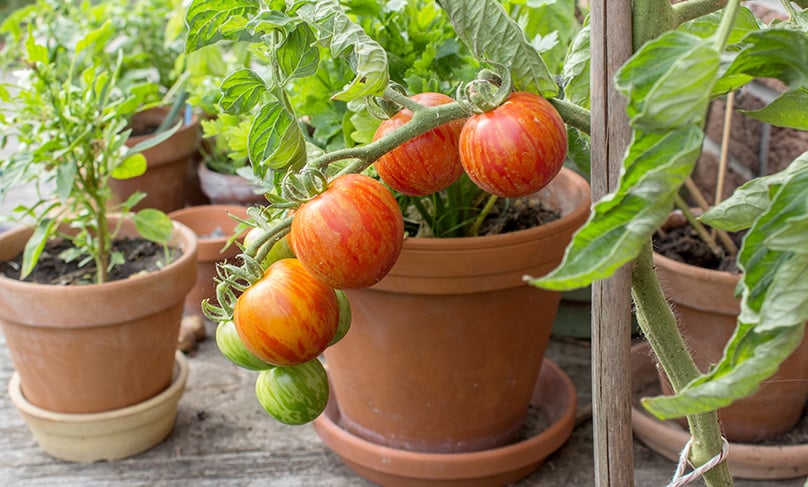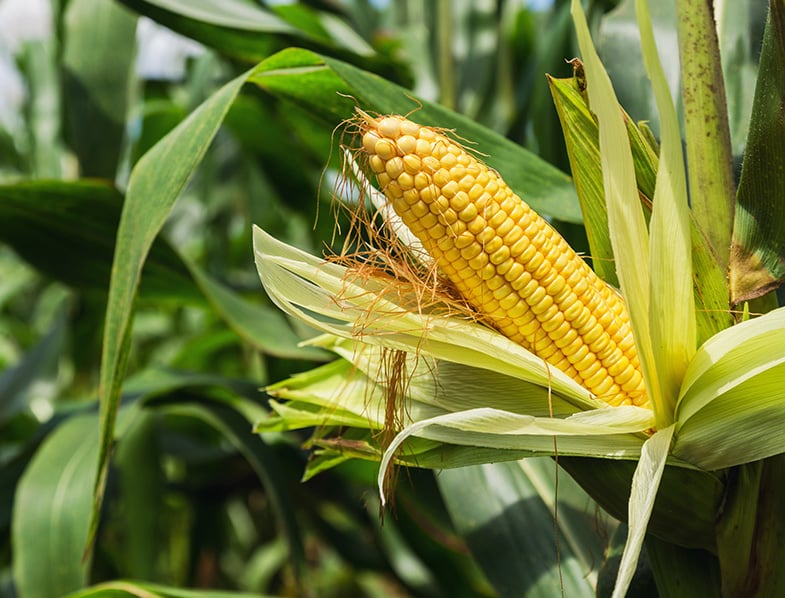If you’re interested in growing cantaloupe, it’s essential to understand the importance of companion planting. This gardening practice involves planting certain plants together to maximize growth and yield. Companion planting can repel pests, attract beneficial insects and provide necessary support for optimal growth. In this article, we’ll discuss the best companion plants for cantaloupe.
Quick Facts
| Companion Plant | Benefits |
|---|---|
| Tomatoes | Repel pests, attract beneficial insects, similar nutrient needs |
| Corn | Provide support, shade soil, symbiotic nitrogen fixation |
| Peas | Support, nitrogen-fixation, shade soil, natural pest control |
| Beans | Nitrogen-fixation, regulate soil moisture, natural pest control |
| Radishes | Break up soil, natural pest control, maximize garden space |
| Dill | Attract beneficial insects, improve flavor, rich in nutrients |
| Oregano | Repel pests, rich in vitamins and minerals, antioxidants |
| Mint | Repel pests, natural fungicidal properties, rich in antioxidants |
| Basil | Attract beneficial insects, repel pests, antibacterial properties, rich in nutrients |
Understanding companion planting
Companion planting is a gardening technique that has been used for centuries. It involves planting two or more different plants together to maximize their growth potential. This technique can improve soil fertility, provide natural pest control, and attract beneficial insects. Companion planting is based on the concept of symbiosis, where different plants interact and benefit from each other.
Companion planting is not a new concept, but it is one that has gained popularity in recent years as more people are becoming interested in sustainable gardening practices. By using companion planting techniques, gardeners can reduce the need for synthetic pesticides and fertilizers, which can be harmful to the environment.
One of the most significant benefits of companion planting is natural pest control. By planting certain plants together, you can create a natural ecosystem that attracts beneficial insects that prey on pests. For example, planting marigolds with tomatoes can help repel nematodes, which are harmful to tomato plants. Similarly, planting basil with tomatoes can help repel tomato hornworms.
Benefits of companion planting
Companion planting offers several benefits, including:
- Natural pest control: By planting certain plants together, you can create a natural ecosystem that attracts beneficial insects that prey on pests. This can help reduce the need for synthetic pesticides.
- Improved soil fertility: Companion planting can help improve soil fertility by using plants that have different nutrient requirements. For example, planting legumes like beans or peas can help fix nitrogen in the soil, which can benefit other plants.
- Attracting beneficial insects: Certain plants like dill, fennel, and parsley can attract beneficial insects like ladybugs and lacewings, which can help control pests.
- Absorbing excess nutrients: Some plants like sunflowers and comfrey have deep roots that can help draw up nutrients from deeper soil layers. These nutrients can then be used by other plants in the garden.
- Providing support for climbing plants: Some plants like beans and peas can provide support for climbing plants like cucumbers and squash.
How companion planting works
Companion planting works by using the natural properties of plants to benefit each other. For example, some plants may attract beneficial insects that prey on pests, while others may help repel pests altogether. Plants with deep roots can help draw up nutrients from deeper soil layers, while shallow-rooted plants can benefit from this nutrient-rich soil. It’s all about finding the right combinations and pairings that work for your garden.
There are many different companion planting combinations to choose from, depending on the plants you want to grow and the pests you want to control. Some popular combinations include planting tomatoes with basil or marigolds, planting carrots with onions or leeks, and planting beans with corn or squash.
It’s important to note that not all companion planting combinations are beneficial. Some plants may actually inhibit the growth of others or attract pests. It’s always a good idea to do your research and choose companion plants that work well together.
Companion planting is a sustainable gardening technique that offers many benefits. By using natural methods to control pests and improve soil fertility, gardeners can create a healthy and thriving ecosystem in their own backyards.

Best vegetable companions for cantaloupe
When it comes to companion planting for cantaloupes, certain vegetables are better suited than others. Companion planting is an age-old gardening technique that involves planting different crops in close proximity to one another to create a mutually beneficial relationship. Here are five of the best vegetable companions for cantaloupe:
Tomatoes

Tomatoes and cantaloupes make an excellent pairing in the garden. Not only do they taste great together, but they also have a symbiotic relationship that benefits both plants. Tomatoes repel pests like aphids and whiteflies while attracting beneficial insects that prey on them. Additionally, tomatoes and cantaloupes have similar soil and nutrient requirements, making them ideal companions.
Corn

Corn and cantaloupes are another great pairing in the garden. Corn provides natural support for cantaloupe vines, while the cantaloupes can shade the soil around the corn and retain moisture. The plants also benefit from symbiotic nitrogen fixation, where the corn releases nitrogen into the soil that the cantaloupes can absorb. This natural fertilization helps both plants grow strong and healthy.
Peas

Peas are another great support plant for cantaloupes. The nitrogen-fixing properties of peas provide essential nutrients for the cantaloupes, while the cantaloupes can help shade the peas and retain moisture. Additionally, peas can attract beneficial insects that prey on pests, making them a natural pest control solution.
Beans

Beans are another nitrogen-fixing plant that can benefit cantaloupes. Like peas, beans provide essential nutrients for the cantaloupes and can help regulate soil moisture. Additionally, beans can help shade the soil around the cantaloupes, which can help keep the soil cool and moist, ideal growing conditions for cantaloupes. Beans can also attract beneficial insects that prey on pests, making them an excellent natural pest control solution.
Radishes

Radishes are another great companion plant for cantaloupes. Radishes can help break up compact soil around cantaloupes, making it easier for the cantaloupes to establish a strong root system. Additionally, radishes provide natural pest control. The radish scent can mask the smell of the cantaloupe, making it harder for pests to locate the plant. Radishes are also a quick-growing crop, so they can be planted in between cantaloupe plants to maximize garden space.
By planting these five vegetables alongside your cantaloupes, you can create a thriving garden that is both beautiful and productive. Not only will your cantaloupes taste great, but they will also be healthier and more resistant to pests and diseases.
Beneficial herbs for cantaloupe growth
Herbs are not only great for cooking, but they can also be an excellent addition to any garden, especially when it comes to companion planting. Companion planting is the practice of growing different plants together to improve growth and yield. Here are four herbs that can help improve cantaloupe growth:
Dill

Dill is a popular herb that is not only easy to grow, but it is also beneficial for cantaloupe growth. It attracts beneficial insects like ladybugs and praying mantises that prey on pests, making it an excellent addition to any garden. Additionally, it can improve the flavor of cantaloupes. Dill is also rich in nutrients like vitamin C, manganese, and iron, making it a healthy addition to your diet.
Oregano

Oregano is another herb that can help improve cantaloupe growth. It can help repel pests like aphids and spider mites, making it a useful addition to any garden. Additionally, it has powerful antioxidants that can benefit human health. Oregano is also rich in vitamins and minerals like vitamin K, iron, and calcium, making it a nutritious addition to your meals.
Mint

Mint is a fragrant herb that can help repel pests, including ants and aphids. It also has natural fungicidal properties that can help protect the cantaloupe from diseases. Mint is also rich in antioxidants like rosmarinic acid, which can help reduce inflammation and improve digestion. With its refreshing flavor and numerous health benefits, mint is a great herb to add to your garden.
Basil

Basil is a versatile herb that can attract beneficial insects and repel pests like mosquitoes and flies. Additionally, it has powerful antibacterial properties that can help protect the cantaloupe from infections. Basil is also rich in nutrients like vitamin A, vitamin K, and iron, making it a healthy addition to your diet. With its sweet and aromatic flavor, basil is a popular herb that can be used in a variety of dishes, from pasta to salads.
Conclusion
Companion planting is a helpful technique that can improve the growth and yield of your cantaloupes. By combining the right plants, you can repel pests, attract beneficial insects, and improve soil fertility, leading to healthier and more abundant yields. By following the guidelines listed in this article and incorporating beneficial herbs like dill, oregano, mint, and basil, you can enjoy a more robust and vibrant garden that is both beautiful and nutritious. Happy planting!
Cantaloupe FAQS
What should you not plant next to cantaloupe?
Avoid planting potatoes and other melon varieties, such as watermelons, next to cantaloupes to prevent the spread of diseases and pests that affect both plants.
What not to plant with melons?
It is best not to plant melons near potatoes or other melon varieties, as they may compete for nutrients and share common pests and diseases, harming each other’s growth.
Can you plant cantaloupe near zucchini?
Yes, you can plant cantaloupe near zucchini, as they don’t have any significant negative interactions. In fact, their large leaves can provide shade and retain moisture in the soil for each other.
Can onions be planted by cantaloupe?
Yes, onions can be planted near cantaloupe, as they help repel certain pests and do not have any known negative effects on cantaloupe growth.
Should I put something under my cantaloupe?
Placing a barrier such as a small board, plastic container lid, or straw beneath the developing cantaloupe fruit can help prevent rotting, discourage pests, and keep the fruit clean.
What is the best plant food for cantaloupe?
Cantaloupes benefit from a balanced fertilizer with a ratio of 5-5-5 or 10-10-10 (N-P-K). Apply fertilizer at planting, and then use a side dressing of compost or well-rotted manure throughout the growing season for optimal growth.
